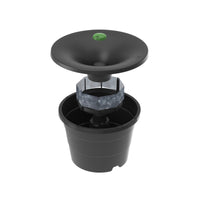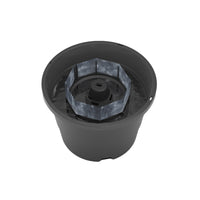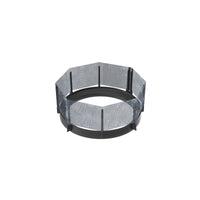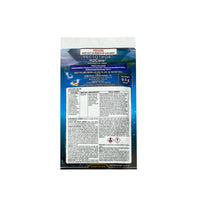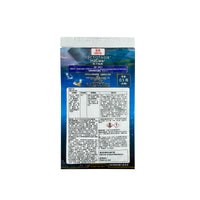In2Care Mosquito Trap
Hong Kong's subtropical climate, characterized by heat and heavy rainfall, provides an ideal breeding environment for Aedes albopictus and Aedes aegypti mosquitoes. These mosquitoes are the main vectors for diseases such as Dengue Fever, Chikungunya, Yellow Fever and Zika Virus, posing not only a nuisance to our daily lives but also a potential public health hazard.
Traditional outdoor mosquito control methods like spraying insecticides or using anti-malarial oil & larvidcide can temporarily reduce mosquito populations. However, due to weather conditions and wind direction, their effectiveness is short-lived and it's difficult to reach hidden breeding spots. The In2Care Mosquito Trap utilizes the natural behavior of mosquitoes to simultaneously kill adult mosquitoes and larvae. Infected female mosquitoes spread the active ingredients to other hidden water sources, expanding the mosquito control range.

The two active ingredients in the In2Care Mosquito Trap (insect growth regulator + natural insecticidal fungus) are approved by the World Health Organization (WHO) and the U.S. Environmental Protection Agency (EPA). They are safe for human living environments, with minimal risks to non-target organisms like fish, birds, and mammals, and do not pollute the water cycle. The safety and efficacy of this trap have been adopted by the Hong Kong government, with the Food and Environmental Hygiene Department (FEHD) officially introducing the In2Care Mosquito Trap as a public mosquito control solution in 2019, as reported by various media.
In2Care Mosquito Trap - Principles & Steps

Step 1: Planning
Users should plan the application site and assess the mosquito situation in detail. It is generally recommended to place one trap every 400 square meters in shaded areas with vegetation to establish effective mosquito bases for accurate trapping and monitoring.
Step 2: Trapping
After placing the mosquito trap in potential breeding sites, users need to fill the cylinder with water and add mosquito powder to the water as bait.
Step 3: Exterminating
When female mosquitoes are lured to the trap to lay eggs, they unknowingly come into contact with the pre-placed pesticide. They then carry the pesticide to surrounding breeding sites. Female mosquitoes carrying the pesticide die a few days later, and their eggs cannot hatch into adults, effectively eradicating the mosquito problem at its source.
Step 4: Controlling
Users can regularly check the number of mosquitoes in the trap for data collection. It is generally recommended to record data every 2-4 weeks to assess the control effectiveness accurately and efficiently.
Frequently Asked Questions
1. Which types of mosquitoes does the In2Care Mosquito Trap target?
Answer: Specifically designed for common mosquito species in Hong Kong, especially targeting:
- Aedes aegypti (main carrier of Yellow Fever)
- Aedes albopictus (main carriers of Dengue Fever and Chikungunya)
2. How often should the device be cleaned and replaced? How long does it take to see results?
Answer: It is recommended to replace and maintain the trap monthly, replenishing the pesticide and water and checking the data simultaneously. Once the device is activated, it can immediately respond to and trap surrounding adult mosquitoes. To see the control effect of cutting off the mosquito problem at its source, it takes a complete cycle of 2-3 weeks.
3. Where should I place the In2Care Mosquito Trap?
Answer: It is recommended to place the In2Care Mosquito Trap in the following key locations:
- Gardens or balconies of residential buildings
- Outdoor green areas of schools, hospitals, and hotels
- Bushes around parks and sports fields
- Construction sites, warehouses, or near outdoor water storage facilities
Product Specifications
Origin: Netherlands
Device Dimensions: 28.5cm (⌀) x 27cm (H)
Optional Add-on Accessories: In2Care Refill Sachet (contains scent strips to attract mosquitoes, larvicide powder, and gauze strips)
HK Reg. No.: 2P342(P)


